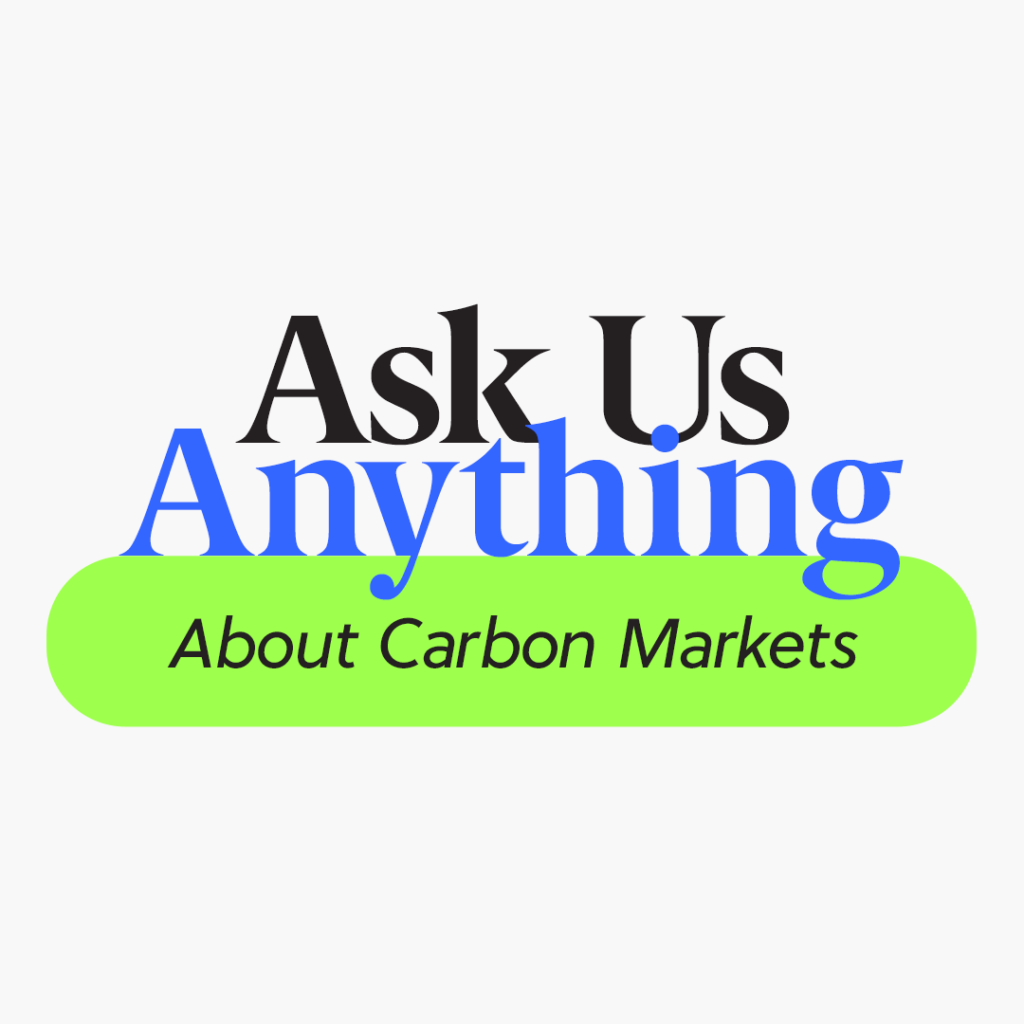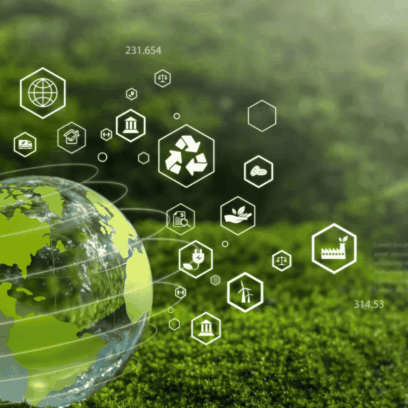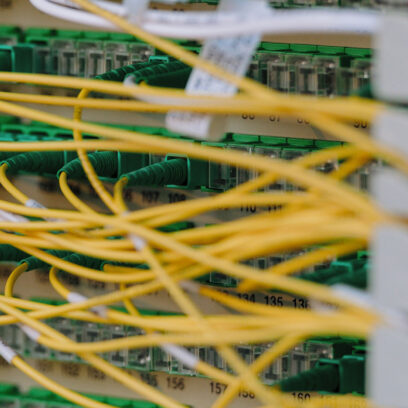Ways to Reduce Scope 3 Emissions


🌍 Carbon markets can feel overwhelming—fragmented data, limited transparency, and conflicting advice make it hard to know where to start. In this webinar, our experts give a clear, practical introduction to the VCM.

As climate-related disclosure and mitigation requirements continue to evolve, understanding the latest regulatory landscape is essential for US companies. In this webinar, we cut through the jargon to provide clear insights into emerging climate-related requirements, breaking down two key federal proposals and one EU regulation impacting some US-based companies. Join us to stay informed and prepared for what’s ahead in climate compliance.
How to manage relationships and leverage partnerships to optimize your organization’s supply chain & logistics to reduce Scope 3 emissions.
Scope 3 emissions, or indirect emissions produced in a company’s value chain, pose both a significant challenge and opportunity for organizations aiming for net-zero. Understanding the origin and scale of these emissions is the first step toward putting into place meaningful mitigation strategies. When it comes to carbon emissions, Scope 3 emissions are the silent majority. Scope 3 can represent up to 75%+ of total corporate emissions and often hide in plain sight, in the supply chain and day-to-day operations, outside the direct control of a company. As regulations tighten and sustainability comes into focus, understanding and acting on your organization’s Scope 3 emissions is becoming not just a nice-to-have but a need-to-have component of a holistic sustainability strategy.
Building on our previous post, which defines Scope 3 emissions and breaks them down into 15 common categories, this post takes a deeper dive. In this post, we’ll explore the potentially significant impact of Scope 3 emissions, and discuss how organizations can tackle them head-on, particularly through leveraging their partner relationships. Finally, we’ll provide real-world examples of Scope 3 emissions in the software as a service (SaaS), consumer packaged goods (CPG), and industrial manufacturing (IM) industries.
The Significance of Scope 3 Emissions
Scope 3 emissions can, and often do, form the majority of a company’s total carbon emissions. Research suggests that in some industries, such as food & beverage and automobile manufacturing, Scope 3 emissions can account for up to 80%+ of the total greenhouse gas (GHG) emissions. This makes identifying and acknowledging where Scope 3 emissions originate in your business and value chain a critical first step toward leveraging partnerships and optimizing your organization’s supply chain for efficient emissions reduction.

Leveraging Relationships and Partnerships to Lower Emissions
Strong relationships and partnerships form an effective foundation for both quantifying and then ultimately tackling your organization’s Scope 3 emissions. When businesses and suppliers align their sustainability goals, joint initiatives aimed at reducing emissions can yield dramatic results. For example, through collaborative projects with its suppliers, PepsiCo achieved a 5% reduction in Scope 3 emissions in 2021 when compared to its 2015 baseline.
Also, data sharing between businesses and suppliers can significantly enhance the accuracy of emissions calculations, allowing for more precise tracking and management. For example, by working closely with its co-packer, BeatBox Beverages has been able to gather accurate data on energy consumption, water usage, and waste associated with its manufacturing process. This data has improved the precision of BeatBox’s emissions calculations, leading to a more accurate understanding of the company’s environmental impact and allowing it to produce a sustainability report that stakeholders can trust.
Forming cross-functional teams with your partners to locate and address emissions hotspots can yield significant improvements and efficiencies when working to measure and reduce your organization’s value chain emissions.
Optimization of Supply Chain and Logistics
The supply chain and logistics sector is a significant contributor to Scope 3 emissions, with transportation alone accounting for 29% of carbon dioxide (CO2) emissions each year—the largest source of GHG emissions in the United States (US)—according to the EPA. This includes the challenging area of cargo shipping, a sector that has been traditionally difficult to decarbonize due to its reliance on heavy fuel oils (HFOs). However, initiatives such as the Low Carbon Fuel Standard (LCFS) and concerted efforts to decarbonize cargo shipping are beginning to make a difference, in conjunction with the actions taken by individual businesses.
Transitioning from this broader industry perspective to the level of individual companies, there are numerous strategies for reducing carbon emissions in an organization’s value chain. By focusing on supply chain optimization—such as sourcing materials locally or using green logistics providers—companies can substantially reduce their carbon emissions. It’s not just about the big decisions; even smaller choices, like redesigning packaging to reduce waste, can significantly reduce emissions over time. Every bit helps, both in mitigating climate impacts and simultaneously being proactive with compliance strategy, especially given the continual rise in proposed and passed rules and regulations that affect US businesses.
The Emerging Regulatory Drivers
Regulatory focus on carbon emissions, particularly Scope 3 emissions, is anticipated to continue to intensify. The U.S. Securities and Exchange Commission (SEC) is currently reviewing public comments for its proposed climate disclosures rule, which, if passed in its current form, would require publicly traded companies to disclose their GHG emissions, including Scope 3 if material, enhancing corporate carbon footprint transparency.
Another significant development is the Federal Supplier Climate Risks and Resilience Proposed Rule. This proposed rule, if enacted, would require major federal suppliers to disclose their GHG emissions, including Scope 3, and climate-related financial risks. This could significantly impact businesses supplying goods or services to the federal government.
Finally, the Corporate Sustainability Reporting Directive (CSRD) in the European Union will also affect multinational corporations with operations in the EU. These emerging regulations underscore the growing necessity of measuring and managing Scope 3 emissions, with potential compliance challenges and reputational risks for those who lag behind, and benefits for those who proactively reduce emissions.
Real Examples of Scope 3 Emissions
In this section, we’ll examine real-world examples from different sectors—SaaS, CPG, and IM—to show how each company identifies, tracks, and manages its Scope 3 emissions. By exploring these examples, we aim to provide a practical perspective on the breadth and complexity of Scope 3 emissions and illuminate the various strategies businesses are employing to reduce their own emissions.
First, here’s a chart to break down a small sampling of the activities that contribute to Scope 3 emissions in each sector, as well as short-term and long-term solutions to help tackle those Scope 3 emission sources:
Ways to tackle Scope 3 Emissions by industry
| Industry | Scope 3 Activities | Short-term Solutions | Long-term Solutions |
| SaaS (Microsoft) | Data center operations, corporate travel, and employee commuting | Promote working from home to reduce commuting emissions, implement waste management programs, and aim for accurate tracking of data center emissions | Work towards being carbon negative by 2030, and remove all carbon emitted since Microsoft’s foundation by 2050, continuing to promote remote work and zero-waste policies in offices |
| CPG (BeatBox) | Production and packaging by co-packer, sourcing ingredients, distribution, corporate travel, and waste management | Work closely with co-packer for accurate emissions tracking, implement waste management programs, and aim for specific KPIs for waste and water reduction | Collaborate with co-packer for clean energy projects, assess the environmental and socioeconomic impacts of ingredient sourcing, and work to improve the recyclability of packaging |
| IM (Siemens) | Energy consumption for production, waste production, water usage, production for multiple brands, and raw material sourcing | Collaborate with third-party manufacturers for improved tracking of energy and resource consumption, maintain sustainability programs, and leverage EPDs | Aim to become carbon neutral by 2030, continually improve operations through LCA-informed methodologies, and implement a closed-loop manufacturing process for waste reduction and management of end-of-life waste |
Skip the RFP—CarbonBetter can help
CarbonBetter Certified Offset Portfolios allow carbon buyers to participate in a variety of projects, geographies, and technologies in one simple transaction rather than navigating a lengthy and complex RFP process with multiple carbon market participants.
Learn More about CBCO 22-1Now, let’s take a closer look at each example.
SaaS Example: Microsoft
In the SaaS industry, the shift to remote work has had a significant impact on the emissions landscape. According to Global Workplace Analytics (GWA), if people who could work from home did so just half the time, it would result in a GHG reduction equivalent to taking the entire New York State workforce permanently off the road, assuming a 75% reduction in traffic during workdays. However, an increase in the number of employees working from home would mean an increase in third-party data hosting—a major contributor to Scope 3 emissions for SaaS companies. That’s why it’s so important to take a holistic approach when addressing your organization’s emissions.
Microsoft, a leading SaaS provider, has been making strides in reducing its Scope 3 emissions. The company has committed to being carbon negative by 2030, and by 2050, Microsoft aims to remove all the carbon the company has emitted since it was founded in 1975. Microsoft's Scope 3 emissions include data center operations, corporate travel, and employee commuting. The company promotes working from home to reduce commuting emissions, and in its offices, Microsoft has a zero-waste policy.
CPG Example: BeatBox Beverages
For CPG companies, co-packers' activities can be significant, contributing to 3.4% of total global GHG emissions. Forming relationships with co-packers and other suppliers around sustainability, and aligning your goals and targets, could significantly reduce these emissions. Strategies like minimizing packaging and opting for low-impact materials can also be beneficial.
For example, BeatBox Beverages outsources its production to a co-packer who oversees the manufacturing and packaging process. In 2021, the co-packer treated nearly 16 million gallons of water with approximately 2.5 million gallons attributed to BeatBox, resulting in reduced water stress on the local aquifer. To further improve their sustainability practices, BeatBox worked toward specific key peformance indicators (KPIs) to reduce waste to 8 grams per liter or less and save water in the packing process.
BeatBox has made strides in optimizing its packaging choice for reduced carbon emissions, using TetraPak cartons which are lightweight, thereby reducing transportation emissions. The company also participates in the circular economy by sourcing Other Than Standard (OTS) Orange Wine, repurposing a byproduct of orange juice production.
IM Example: Siemens
In the IM sector, tracking Scope 3 emissions is complex due to the myriad of materials and suppliers involved. Leveraging tools like Environmental Product Declarations (EPDs) can help manage this task. However, many current techniques fail to account for the complete product lifecycle and all Scope 3 categories, leaving some emissions unaccounted for. A more comprehensive approach is to adopt Life Cycle Assessment (LCA) informed methodologies, which provide a broader view of emissions.
Siemens, a global industrial manufacturer, has been proactive in managing its Scope 3 emissions. The company has set ambitious goals to become carbon neutral by 2030. Siemens' operations involve self-owned facilities and third-party manufacturers, all committed to sustainability. They ensure energy efficiency, water conservation, and waste minimization. Siemens' Scope 3 emissions comprise corporate travel, product distribution, raw material sourcing, and the co-manufacturer's production. The co-manufacturer monitors fuel and electricity consumption, attributing emissions to Siemens proportionately. Implementing a closed-loop manufacturing process, Siemens significantly reduces waste and designs machinery for enhanced durability and repairability, thereby managing end-of-life waste.
Conclusion
Accurately assessing and managing Scope 3 emissions requires a plan, stakeholder engagement, and significant volumes of data, which may feel overwhelming for many organizations. CarbonBetter offers support to ensure the proper implementation of GHG accounting methodologies, the correct categorization of emissions, and the establishment of repeatable processes for accuracy year after year. Don't tackle the complexities of Scope 3 emissions alone; we are here to help wherever you are in your sustainability journey. Contact us today to get started.
Scope 3 emissions can originate from a wide variety of activities. In addition to the examples provided in the article, other categories may include waste generated in operations, business travel, employee commuting, leased assets, investments, and end-of-life treatment of sold products, among others. It's important for each organization to identify the categories that are most relevant to its operations and take steps to measure and mitigate these emissions.
Even for small businesses, there are still steps that can be taken to begin addressing Scope 3 emissions. Initially, focus on areas that you can control directly and where changes would have a high impact. This might include optimizing energy use, reducing waste, or choosing suppliers with strong sustainability practices. As resources allow, consider conducting a more comprehensive analysis of your company's Scope 3 emissions and developing a formalized emissions reduction plan.
Achieving carbon neutrality without addressing Scope 3 emissions can be challenging, especially given that Scope 3 emissions often represent a significant proportion of a company's total emissions. While it might be possible to offset these emissions through carbon credits or similar mechanisms, a comprehensive approach to emissions reduction that includes Scope 3 emissions will typically be more sustainable and credible in the long term.
Businesses can influence their suppliers to reduce emissions by incorporating sustainability criteria into procurement processes, working collaboratively with suppliers on sustainability initiatives, and providing incentives for suppliers to adopt greener practices. Open communication and collaboration are key, as these efforts can yield mutual benefits such as cost savings, improved operational efficiency, and enhanced brand reputation.
Measuring and managing Scope 3 emissions requires a combination of environmental science, data analysis, and business strategy skills. This includes understanding greenhouse gas accounting methodologies, interpreting complex data sets, and being able to translate this understanding into actionable business strategies. Depending on the size and complexity of the organization, this could involve a dedicated sustainability team or the use of external consultants. Contact us today to learn how we can help.


